Born in Nigeria, Aaron Kudi grew up in the UK, in London and Devon, and turned to fine art after studying psychology. His sculptures bring found objects together – ranging from the familiar (furniture; mannequins) to satellite dishes and deer antlers – in unlikely juxtapositions, as a means of drawing attention to disparities of class. Here he talks to Apollo about chance and method, what sculptors can learn from rap music, and about his most recent project dealing with spiritualism in working-class communities.
The materials you use in your artworks are often imbued with broader social or cultural meanings – can you tell me how you choose materials to work with?
It starts with what I’m trying to say. When I start a project, I’ll pick some themes – often continuing the dialogue from previous projects – and then I’ll break those themes down to arrive at the simple point I’m trying to make – whether it’s about infrastructure, class dynamics, religion, heritage… Then it’s just about connecting the thread, really, finding a commonality between two materials that continues that dialogue. In Vices of Blackness (2020), I opted for a material that’s associated with the upper classes – white marble – squeezing the Black body.
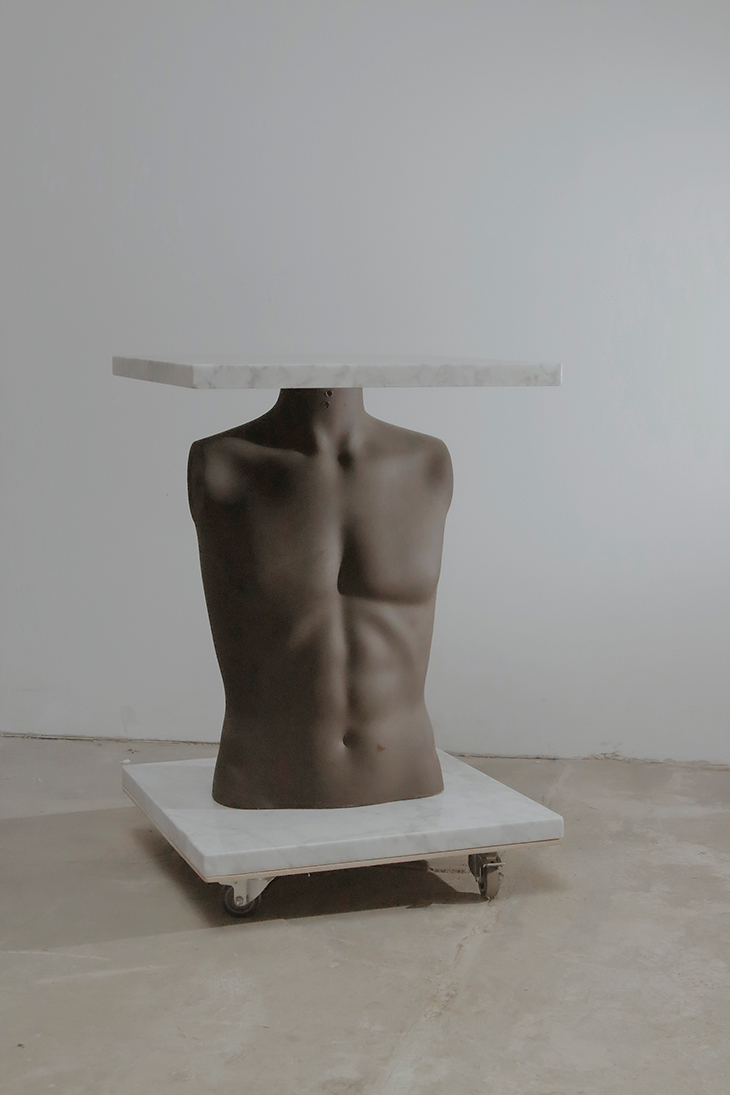
Vices of Blackness (2020), Aaron Kudi. Photo: Rashidi Noah
It sounds as if you go about your art quite methodically – but many of your sculptures bring disparate objects together in surprising ways, with titles that suggest a delight in punning – for instance, Double Entendre (2020). How much room is there for chance in your work?
I’d say the process is 70 to 80 per cent methodical, and then I would say the remaining 20 to 30 per cent is ‘what will be will be’. There are pieces I’ve made where I let the ancestors guide me, for want of a better term. Punning I get from rap music – I really appreciate that ability to find a pocket in a beat and drop a double-entendre into it. I think you can take that same framework and apply it to art.
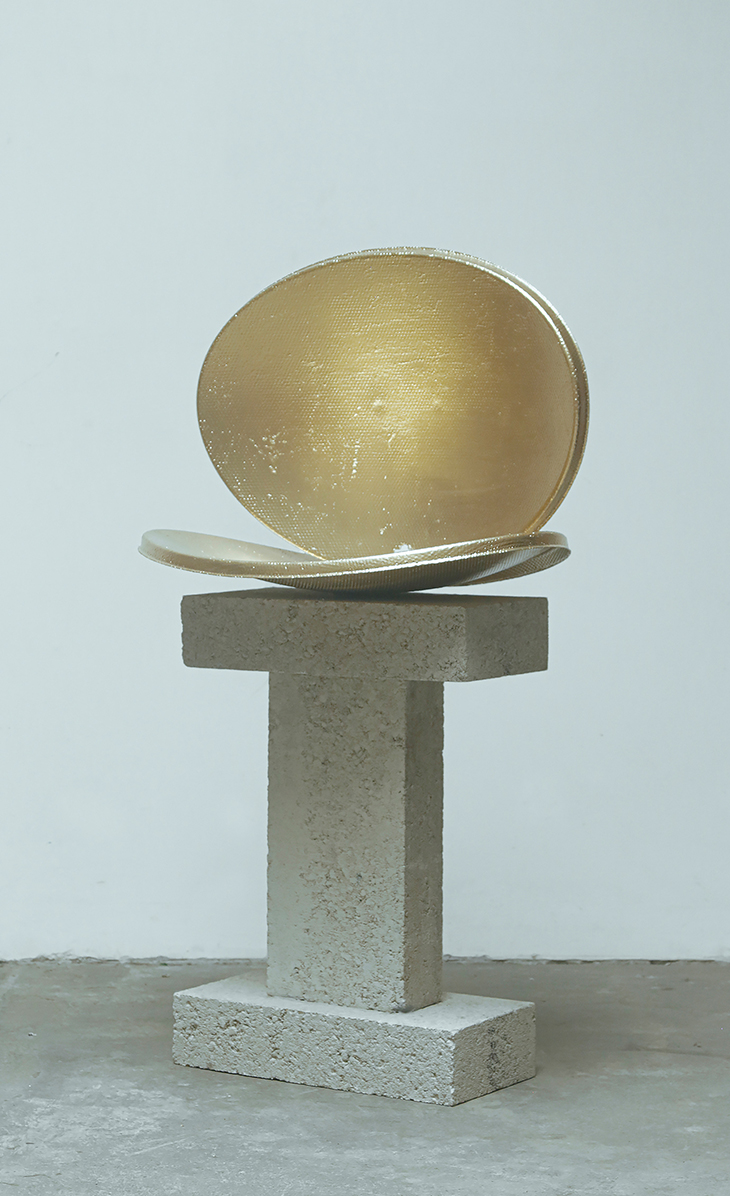
Double Entendre (2020), Aaron Kudii. Photo: Rashidi Noah
Frequently your work has incorporated recycled objects. Why does the idea of an object that has already been used appeal to you?
It’s a case of an object having lived a previous life before – and you get to give it a new one. When I first started repurposing materials, I was aware of the economic significance – but there’s also this sense that this is what happens in life, right? You experience life in different ways at different points – there are transitions. Things evolve, things change – and you change.
An object like the base of a chair, for instance, already has a sense of history – a sense of experience. I don’t try to fabricate any of the wear or tear that appears in my sculptures. They are what they are.
You studied psychology before becoming an artist – how has that shaped the way you go about your work?
I think everyone should study psychology. We have this resource that can help us to understand each other better, but we don’t really understand each other at all. Every day I find it so crazy that humans – who are able to do a lot of other things exceptionally well – can’t grasp any kind of collectivist purpose as a species.
That’s ultimately what I’m trying to communicate. I do it through art because my generation’s a visual generation; Generation Alpha is a hyper-visual generation. Through sculpture, you can have that conversation in a rawer way.
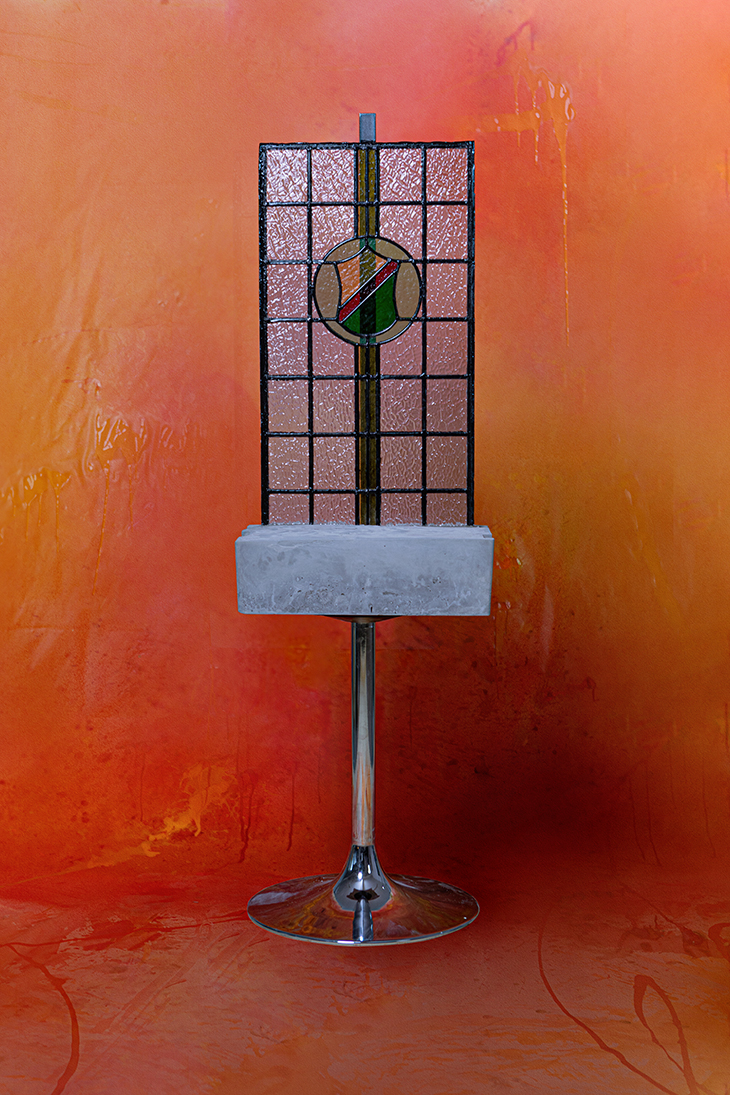
Birth of a Nation (2021), Aaron Kudi. Photo: Rashidi Noah
What projects do you have currently in the pipeline?
I’ve just finished a project looking at spirituality – continuing a line of conversation from my previous project, which looked at ideas of heritage in working-class communities. My parents are Pentecostal Christians – and that has given me a lot of the values that I hold today. But at the same time, I’m not exercising my faith in the way that they did – it’s evolved for me; I’m also very aware of that Christianity was something that was brought to Africa by missionaries. So the question I’m asking is how has spirituality provided a structure for values and morals, but also what might that look like moving forward? The values that helped my parents’ generation through the 1980s and ’90s aren’t necessarily helping kids through the same things today.
I’ve made a chair – a steel chair in the shape of a cross, but coated with a quick-rusting black matt paint, so that the chair rusts over time, reflecting the way that the meaning of Christianity has changed, and continues to evolve.
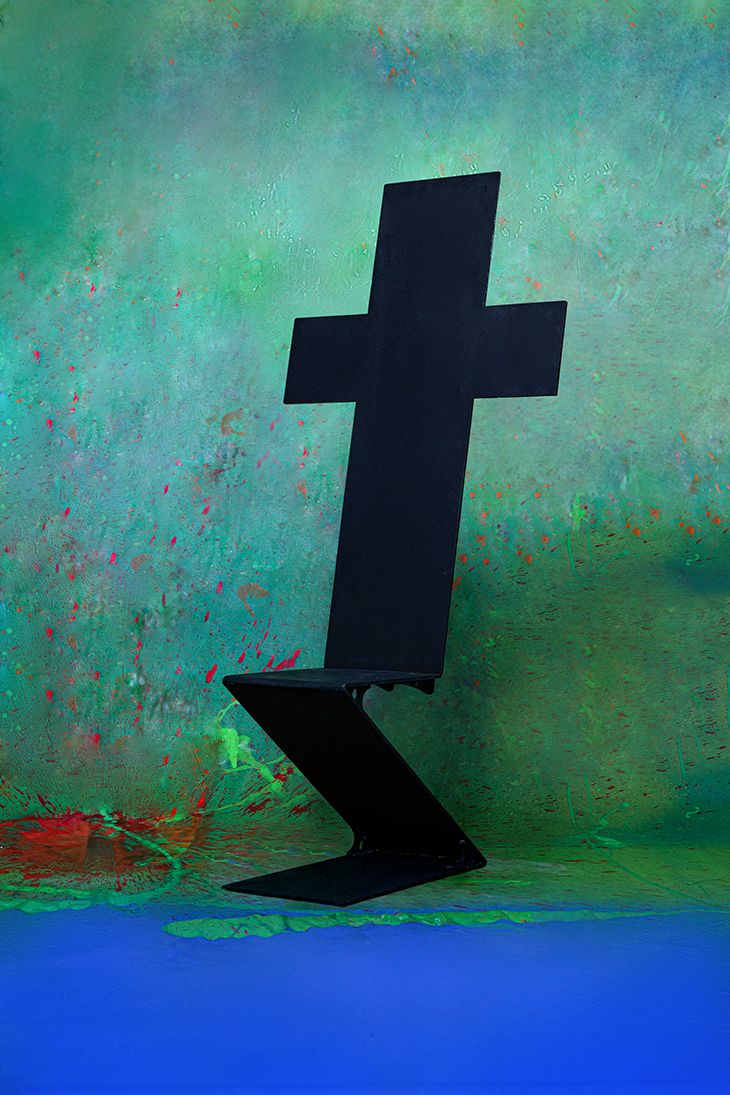
Pain is the Essence (2021), Aaron Kudi. Photo: Rashidi Noah
For more information on Kudi’s work, visit www.kudii.org




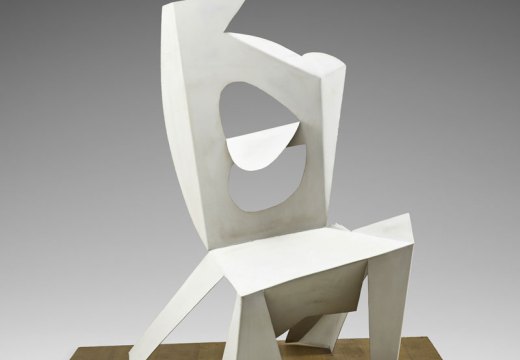









![Masterpiece [Re]discovery 2022. Photo: Ben Fisher Photography, courtesy of Masterpiece London](http://zephr.apollo-magazine.com/wp-content/uploads/2022/07/MPL2022_4263.jpg)
‘Like landscape, his objects seem to breathe’: Gordon Baldwin (1932–2025)